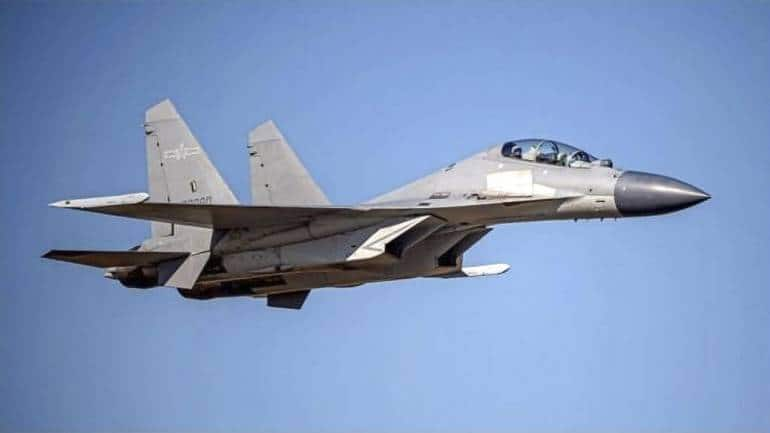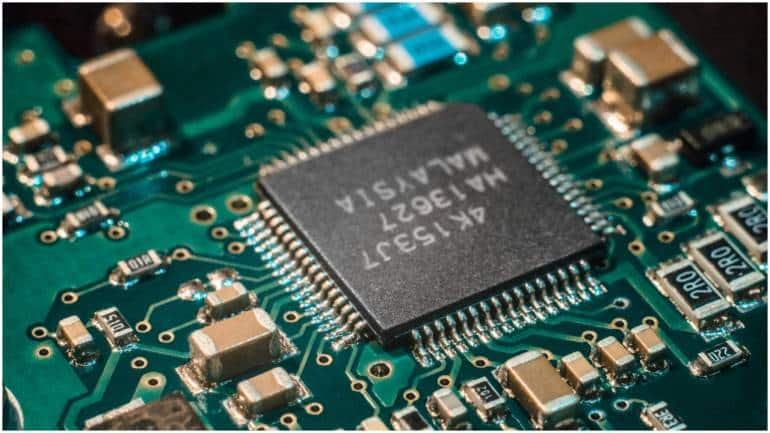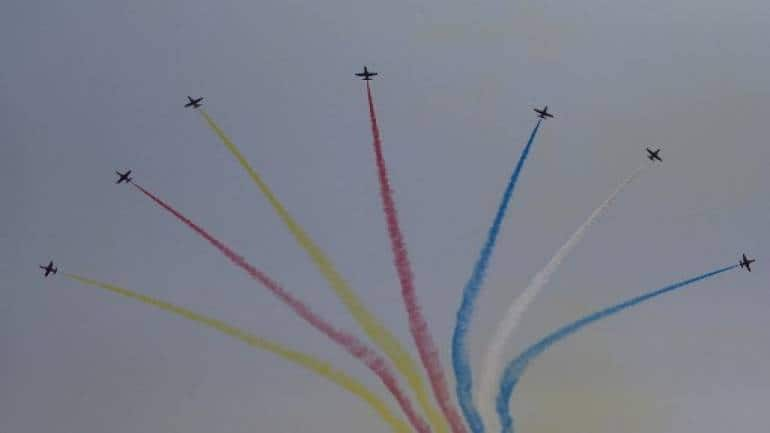China flies record 52 planes toward self-ruled Taiwan
 ]
]
AP
China flew 52 fighter planes toward Taiwan on Monday in the largest show of force on record, continuing the three days of sustained military harassment against the self-ruled island.
The sortie included 34 J-16 fighter jets and 12 H-6 bombers, among other aircraft, according to Taiwan’s Ministry of National Defense. Taiwanese air force scrambled the jets and monitored the movement of the Chinese warplanes on its air defense system.
Starting last Friday, on China’s National Day, the People’s Liberation Army sent 38 warplanes into the area and 39 aircraft on Saturday, previously the most in a single day since Taiwan began releasing reports on the flights in September 2020. China sent an additional 16 planes on Sunday.
The number of flights into Taiwan’s air defense identification zone had prompted a statement from U.S. State Department spokesperson Ned Price over the weekend, who warned that China’s military activity near Taiwan risks miscalculation and undermines regional peace and stability.
“We urge Beijing to cease its military, diplomatic, and economic pressure and coercion against Taiwan,” the statement said.
India’s chip industry can leapfrog on Taiwan deal, but beware of China
 ]
]
Representative image. Source: Shutterstock
India-Taiwan ties seem to be in a honeymoon phase now. According to recent news reports, the two governments are finalising a semiconductor manufacturing agreement worth billions of dollars. This bilateral co-operation would encourage semiconductor giants such as the Taiwan Semiconductor Manufacturing Corporation (TSMC) and other players to diversify their production beyond their geographical location.
India, a captive market and a potential supplier, can help itself rejig similar manufacturing units, and partake in the global production chain. However, given the evolving geopolitics in the Indo-Pacific, India’s ties with Taiwan cannot be insulated from some eye-rolling from China.
Demand-Supply Balance
From smart phones to high-performance computing, and from automobiles to digital consumer electronics, semiconductors are the backbone of modern day life. Thanks to the United States-China trade war since 2017, followed by COVID-19 pandemic for the last 18 months, the shortage has had a ripple effect across high-tech manufacturing industries.
In India, auto majors such as Maruti have their productions slumped because of supply shortage. With few global players in the US, Japan, South Korea, and Taiwan, the supply disruption has created serious concerns to other economies to re-strategize policies for self-sufficiency, and not to be caught off guard again.
India, and China — both net importers of semiconductors — have been reeling under such problems. Nevertheless, China has made it a national strategy for ‘technological independence’, and develop its own semiconductor industry spending billions of dollars, more so since the trade war with the US.
India’s China Conundrum
When it comes to semiconductors, India is a net importer. In 2020, India imported approximately 40 percent of the total electronics from China, ever after a serious tension at the border in Ladakh in mid-June. In fact, China is India’s largest trading partner.
Although India has a niche capability in chip designs, its role in the global semiconductor supply chain is unnoticeable. The uncertainty of increasing border tensions and an aggressive China in South Asia can be a destabilising factor for India’s economy in the long run. Unless India diversifies its dependence of these crucial products, it would be disastrous not only on the economic front, but also in other strategic sectors. Therefore, engaging with Taiwanese semiconductor firms is a welcome move.
The TSMC, one of the world’s largest semiconductor manufacturer, investing together with Indian partners would help India harness its resources and capabilities to become self-sufficient, if not a net exporter.
However, India’s tango with Taiwan could be disconcerting China, which regards the Taiwan as one of its ‘own provinces’, even when it has a separate self-ruling political system since its formation. Moreover, India’s ‘One-China Policy’ does make New Delhi cautious as to not make it a big announcement giving due regards for Beijing’s concerns.
Since Taiwan is an emotional issue for China’s ruling Chinese Communist Party, and more so under President Xi Jinping, de-hyphenating economic and political engagements become difficult. In fact, New Delhi will be treading a thin line so as to not invite Beijing’s wrath.
Additionally, India is one of the 18 countries that is included under Taiwan’s New Southbound Policy (xin nanxiang zhengce), so the mandate of bilateral ties more are economic and cultural than political. In fact, Taipei and New Delhi’s bilateral co-operation in the education sector, especially the joint programmes in science and technology, fellowships to study, research and work in Taiwan, is laudable.
Changing Geopolitical Realities
With the new regional arrangements in the form of the Quad, and now AUKUS, the Indo-Pacific is a new theatre of power games. Although the Quad has taken cognisance of the possible scenario, multi-layered co-operation not only becomes a premium among the partners but also among competitors — not just in strategic domains but in global commons too.
The ‘peaceful’ rise of China hypothesis is doubted by these countries and more so by its neighbours. Taiwan, though not a member of these arrangements, could be at the centre of the storm of these geopolitical realities. Some analyses indicate that China can enrich its semiconductor capability by a hostile takeover of the island. It is also likely such instances could result in global disruption, and sabotage.
However, that should not matter in India’s push for developing a semiconductor industry. If India wants to succeed in inking the deal with the TSMC, then the homework is yet to begin. Industries such as these require a well-incubated ecosystem. India needs to have hi-tech campuses and firms like the ones in Hsinchu, Taiwan’s Silicon Valley, which can help India have a competitive advantage. ‘Jugaad’ will not help.
Bhim Subba teaches political science at the University of Hyderabad, and is a visiting researcher at the Institute of Chinese Studies, New Delhi.
China shows off new drones and jets at Zhuhai airshow
 ]
]
Zhuhai airshow (Image: AFP)
China on Tuesday showed off its increasingly sophisticated air power including surveillance drones, with an eye on disputed territories from Taiwan to the South China Sea and its rivalry with the United States.
The country’s biggest airshow, in the southern coastal city of Zhuhai, comes as Beijing pushes to meet a 2035 deadline to retool its military for modern warfare.
China still lags the United States in terms of tech and investment in its war machine, but experts say it is narrowing the gap.
A US intelligence report this year flagged China’s growing influence as one of America’s biggest threats.
On Tuesday, the air force aerobatic team left colourful vapour trails as it manoeuvred in formation, while visitors inspected new jets, drones and attack helicopters on the tarmac.
The CH-6, a prototype drone with a wingspan of 20.5 metres (67 feet), was among the domestic tech unveiled.
It is designed for surveillance and can also carry weapons for strike missions, according to open-source intelligence agency Janes.
The drone has a cruising altitude of 10,000 metres, “but it can go as high as 15,000 metres,” Qin Yongming, general manager of drone maker Aerospace CH UAV Co, told AFP.
“It can fly for longer periods (than previous models)… it can carry out longer missions, with higher efficiency without any time limits.”
Other debutants included the WZ-7 high-altitude drone for border reconnaissance and maritime patrol, as well as the J-16D fighter that has the ability to jam electronic equipment.
Both have already entered service with the Chinese air force, state media reported.
“They will play a major role in both the Taiwan Strait and the South China Sea,” military commentator Song Zhongping told AFP.
Beijing claims virtually all of the South China Sea – disputed with several other nations – and says the self-ruled island of Taiwan is an inviolable part of its territory.
Under president Donald Trump, the United States authorised arms sales to Taiwan worth around $18 billion worth, including advanced missile platforms – sales that have angered Beijing.
Alternative drone supplier
China is also “clearly positioning itself to be an alternative supplier” of advanced drones, with relative affordability, said Janes analyst Kelvin Wong.
The United States and European countries have been hesitant to supply such equipment outside a select group of partners, he added.
Chinese drones have already combat action in the Middle East, and have been sold to customers in other regions too.
The J-16D, meanwhile, improves the combat capabilities of the People’s Liberation Army, said James Char, a Chinese military expert at Singapore’s Nanyang Technological University.
The jet has wingtip pods to disrupt enemy electronic equipment, and has drawn comparisons with the US-made EA-18G Growler.
“It gives the Chinese military an advantage in terms of conducting aerial electronic warfare over targets that possess significant air defence capabilities,” Char said.
The Zhuhai airshow, usually held every two years, was postponed from last year due to the Covid-19 pandemic and is being staged before a largely domestic audience due to quarantine and travel restrictions.